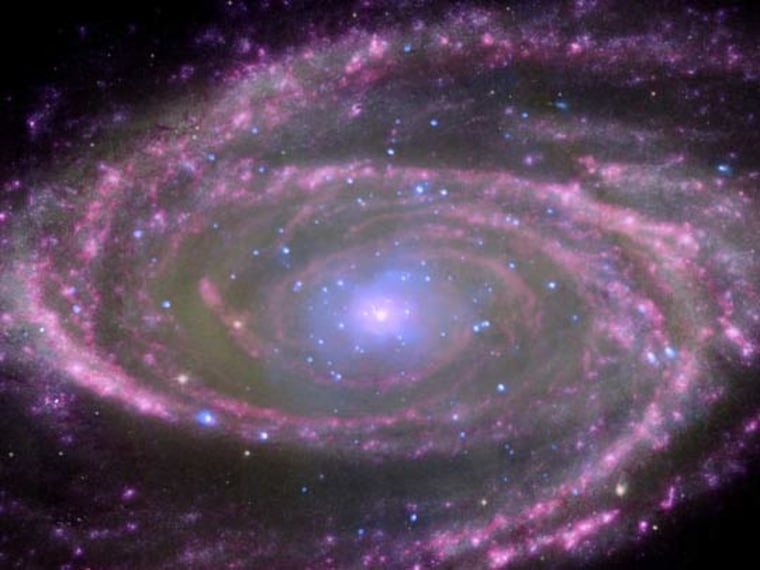By cramming several thousand superconducting quantum interference devices (SQUIDS), which guide light down a track much like a rail guides trains, scientists hope to simulate the effects of a black hole.
The research could help prove a 35-year-old theory originally proposed by physicist Stephen Hawking and cement humanity's fundamental understanding of the universe.
"This is not a black hole that we are creating; this is analogous to a black hole," said Miles Blencowe, a physicist at Dartmouth College and co-author on a paper in the journal Physical Review Letters that describes the proposed experiment.
Contrary to popular belief, black holes do not suck up absolutely everything around them. They actually emit a tiny amount of heat, known as Hawking radiation, as matter and energy is sucked into the singularity.
Detecting the emitted thermal radiation has proved exceptionally difficult. To date no scientist has directly observed Hawking radiation.
According to Hawking's theory, the radiation coming from the black hole is slightly above the background temperature of outer space.
Since detecting real Hawking radiation has been so difficult, scientists have proposed creating black hole analogs, systems that operate like black holes except much smaller and easier to control than an object several million light years away.
The black hole analog proposed by the Dartmouth scientists would only be a few millimeters in length and have an even smaller width. Physically, the SQUIDs are composed of two layers: an inner layer that conducts light and an outer layer that allow researchers to actually manipulate the light using magnets.
When cooled to just above absolute zero, the inner layer conducts microwaves very well, but not perfectly. When a beam of microwaves is projected on the SQUIDs, it basically acts like a train on a very bumpy ride.
The beam eventually breaks into two separate photons, similar to a train's engine separating from its cars. Like an unbound engine, one of the photons continues to race forward, leaving its counterpart lagging behind. This process provides a rough analog of a black hole event horizon.
When the particles split, a tiny bit of heat should be released, which the scientists should be able to detect. If trace amounts of heat are found, that will help bolster the case for true Hawking radiation.
Dartmouth isn't the only group looking to detect an analog of Hawking radiation. Several other groups are currently working on their own black hole analogs.
A group in Israel recently created a sonic black hole, accelerating atoms beyond the speed of sound to make it impossible for a sound wave to escape. Another group wants to use water waves to simulate black holes.
One of the earliest proposals for black holes analogs came from a University of British Columbia theoretical physicist named William Unruh. Unruh proposed creating a black hole analog using several kilometers of SQUIDs.
"I think that it's really great that people are finding ways to do these black hole analog experiments," said Unruh.
"My one concern is that millimeters might be too small to reliably see an effect," but scientists are always coming up with new ways to test theories he hadn't thought possible, said Unruh.
No matter how the black hole analog is produced, any findings that result will not be definitive. Direct observation of Hawking radiation from a true black hole will still be required to prove Hawking's theory.
If a black hole analogs is able to demonstrate Hawking radiation, "it will give scientists a lot more faith that we are on the right track," said Unruh, who expect someone will eventually detect analogous Hawking radiation. "If people do these experiments and find nothing, it will be a real shock to the system."
More on: black holes
